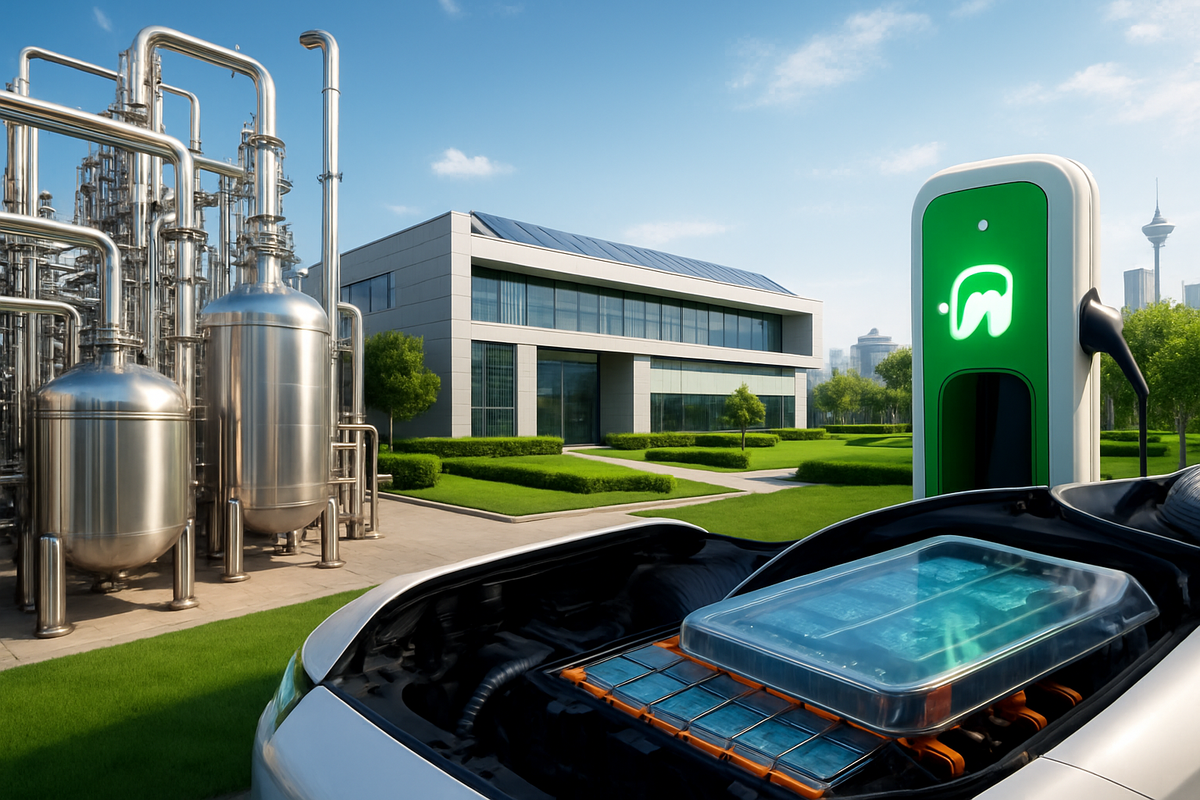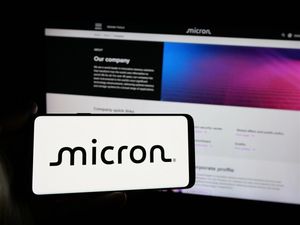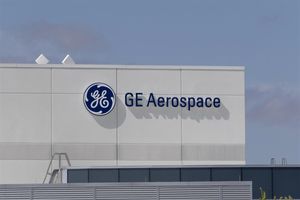
Daya Bay, China – October 21, 2025 – Clariant (SIX: CLN), a global leader in specialty chemicals, is poised to significantly bolster the global supply of advanced, halogen-free flame retardants with a strategic CHF 100 million (approximately $126 million) investment in its Daya Bay facility in China. This substantial expansion, which saw its first production line become operational in October 2023 and anticipates the second line to be fully online by November 2025, is a direct response to the burgeoning demand for enhanced fire safety solutions, particularly within the rapidly expanding e-mobility and electrical & electronic (E&E) sectors across Asia and worldwide.
The move is set to have immediate and far-reaching implications, solidifying Clariant's position as a critical enabler of sustainable innovation in high-growth industries. By localizing and scaling up production of its innovative Exolit™ OP and AP portfolios, Clariant aims to improve supply chain resilience, reduce lead times for Asian customers, and accelerate the adoption of safer, more environmentally friendly materials crucial for the next generation of electric vehicles and smart electronics. This investment underscores a broader industry trend towards sustainable chemistry and regionalized manufacturing to meet specialized market needs.
Strategic Expansion Fuels Global Fire Safety Demand
Clariant's investment at its Daya Bay facility is a cornerstone of its strategy to meet the escalating global need for high-performance fire safety solutions. The first production line, inaugurated in October 2023, has already begun contributing to the supply of sustainable, halogen-free flame retardants. The highly anticipated second line, slated for full operation in November 2025, will further amplify this capacity, positioning Clariant as a dominant force in the market. This phased approach allows for a smooth ramp-up and integration of advanced manufacturing processes.
The facility's enhanced capabilities are specifically designed to produce cutting-edge flame retardants from Clariant’s renowned Exolit™ OP and AP portfolios. These products are critical for applications demanding superior fire protection, such as those found in electric vehicle batteries, connectors, cables, busbars, and charging infrastructure, as well as in various electrical and electronic components. By establishing a robust local production hub in China, Clariant aims to foster closer collaboration with its customers, enabling faster response times to evolving market requirements and facilitating the joint development of tailored fire safety solutions. This strategic geographical placement complements Clariant's existing production network, including its facility in Knapsack, Germany, creating a more resilient and globally responsive supply chain.
Key product innovations emerging from this expansion include Exolit OP 1242 (TP) and Exolit OP 1266 (TP), specifically engineered for polybutylene terephthalate (PBT) applications. Exolit OP 1242 (TP) boasts exceptional hydrolysis stability, a vital characteristic for materials exposed to hot and humid conditions, while Exolit OP 1266 (TP) offers a stable comparative tracking index (CTI) of 600V, ensuring long-term electrical insulation crucial for high-voltage applications. Additionally, Clariant has introduced Exolit AP 422 A as a melamine-free, SVHC-free alternative for polyisocyanurate (PIR) insulation panels and as a halogen-free replacement for conventional flame retardants in polyurethane foams. These new offerings also serve as stable alternatives to antimony trioxide (ATO), addressing concerns over its recent price increases and supply chain volatility.
Initial market reactions to Clariant's proactive investment have been largely positive, signaling confidence in the company's foresight and commitment to sustainable innovation. Industry analysts view the move as a timely response to regulatory pressures and consumer demand for safer, greener products, especially within the e-mobility sector where fire safety is paramount. The investment is expected to strengthen Clariant's market share in Asia and reinforce its reputation as a leader in high-performance specialty chemicals, particularly as the e-mobility sector continues its exponential growth trajectory.
Industry Players Brace for Impact
Clariant's significant investment in flame retardant production in China is set to send ripples across the chemical industry, creating clear winners and losers and prompting strategic adjustments among various companies. At the forefront of those set to benefit are companies deeply entrenched in the e-mobility sector, particularly electric vehicle (EV) manufacturers and their component suppliers. Companies like Tesla (NASDAQ: TSLA), BYD (HKG: 1211), and traditional automakers transitioning to EVs such as Volkswagen (FWB: VOW3) and General Motors (NYSE: GM), will gain access to a more robust, localized, and innovative supply of critical fire safety materials. This ensures enhanced safety standards for their battery packs, charging systems, and interior components, which is crucial for consumer confidence and regulatory compliance as vehicles adopt higher voltage systems (800V and above). Suppliers of engineering plastics and composites, who integrate these flame retardants into their materials, will also see increased demand for their advanced solutions.
Conversely, some traditional flame retardant manufacturers, particularly those heavily reliant on halogenated solutions or antimony trioxide, may face increased competitive pressure. Companies that have been slower to innovate or transition to sustainable, halogen-free alternatives could see their market share erode, especially in the rapidly evolving Asian market. While specific company names are not immediately apparent without deeper market analysis, any firm that cannot match Clariant's scale, technological advancement, or commitment to sustainability in this segment could be at a disadvantage. This investment also challenges other global specialty chemical companies, such as Lanxess (FWB: LXS) or Albemarle (NYSE: ALB), to accelerate their own sustainable flame retardant initiatives to maintain competitiveness, particularly in the Asian market.
The impact extends beyond direct competitors. The enhanced availability of advanced flame retardants will also benefit the broader electrical and electronics (E&E) industry. Manufacturers of consumer electronics, industrial equipment, and building materials requiring stringent fire safety standards will find it easier to source high-quality, sustainable materials. This could lead to an acceleration in the adoption of halogen-free solutions across various applications, driven by both supply availability and increasing regulatory scrutiny. Companies providing raw materials to Clariant for these flame retardants may also see a boost in demand, while those supplying traditional, less sustainable alternatives might experience a decline.
Ultimately, the investment underscores a significant shift in the chemical industry towards sustainability and regionalization. Companies that have proactively invested in R&D for eco-friendly solutions and established strong local supply chains, much like Clariant, are positioned to thrive. Those that delay this transition risk falling behind in a market increasingly prioritizing performance, safety, and environmental responsibility.
Broader Industry Implications and Trends
Clariant’s $126 million investment in China transcends a mere capacity expansion; it is a powerful indicator of several overarching trends reshaping the global chemical industry and the e-mobility sector. Firstly, it emphatically reinforces the industry-wide pivot towards sustainable and halogen-free fire safety solutions. Driven by escalating environmental regulations, consumer demand for safer products, and a growing awareness of the health impacts of traditional flame retardants, the shift away from halogenated compounds is accelerating. This investment positions Clariant (SIX: CLN) as a frontrunner in this transition, setting a benchmark for competitors and partners alike. The focus on products like Exolit™ OP, which are phosphorus-based, and even biomass-based Exolit™ OP Terra, aligns perfectly with global initiatives to reduce the use of Substances of Very High Concern (SVHCs) and to minimize environmental footprints.
Secondly, the move highlights the critical importance of regionalized manufacturing and supply chain resilience. The COVID-19 pandemic and subsequent geopolitical tensions have exposed vulnerabilities in global supply chains, prompting many multinational corporations to diversify production geographically. By significantly boosting local production in China, Clariant is not only closer to its rapidly growing Asian customer base but also de-risking its operations against potential future disruptions. This trend is likely to see other global chemical companies follow suit, investing in key regional markets to ensure more stable and responsive supply chains, which could lead to a more distributed global manufacturing landscape for specialty chemicals.
The investment also has significant ripple effects on competitors and partners. For direct competitors in the retardant market, such as Lanxess (FWB: LXS) or BASF (FWB: BAS), Clariant's enhanced capacity and technological lead in halogen-free solutions will necessitate a re-evaluation of their own strategies. They may be compelled to accelerate their R&D efforts, increase investments in sustainable alternatives, or seek strategic partnerships to maintain competitiveness, especially in the lucrative Asian e-mobility market. For partners in the e-mobility and E&E sectors, Clariant's localized production offers a more reliable and innovative source of materials, potentially fostering deeper collaborative efforts in product development and application testing, particularly with the support of facilities like the One Clariant Campus in Shanghai.
From a regulatory and policy perspective, this investment anticipates and aligns with tightening global standards for fire safety and material sustainability. Regions like the EU, North America, and increasingly Asia, are implementing stricter regulations regarding the use of certain chemical substances, particularly in high-risk applications like electric vehicle batteries. Clariant's proactive move into halogen-free and SVHC-free solutions positions its customers to meet these evolving compliance requirements more easily, thereby reducing regulatory hurdles and accelerating market entry for new products. Historically, similar shifts in material science, such as the phase-out of lead in electronics or certain refrigerants, have demonstrated that companies investing early in compliant and sustainable alternatives gain a significant competitive advantage. This investment echoes those precedents, signaling a long-term commitment to responsible chemical manufacturing.
The Road Ahead: Opportunities and Challenges
Clariant's substantial investment in China sets the stage for a dynamic period, presenting both significant opportunities and potential challenges in the short and long term. In the short term, the imminent operationalization of the second production line by November 2025 will immediately boost the supply of advanced flame retardants to the Asian market. This rapid increase in availability is expected to further accelerate the adoption of halogen-free solutions in the e-mobility and E&E sectors, as manufacturers will have a reliable, local source for critical components. Clariant (SIX: CLN) can anticipate an immediate strengthening of its market share in the region and an enhanced ability to forge new partnerships with key players in these burgeoning industries.
Looking at the long term, this strategic pivot positions Clariant to capitalize on the sustained exponential growth of the e-mobility sector and the broader push for sustainable materials globally. The deep integration of its local R&D capabilities, exemplified by the One Clariant Campus in Shanghai, with the Daya Bay production facility, will foster continuous innovation. This synergy allows Clariant to rapidly develop and customize next-generation flame retardants that meet future demands, such as those for higher voltage battery systems, lighter-weight composite materials, and increasingly stringent environmental regulations. This could lead to the development of entirely new product lines and application areas, further cementing Clariant's leadership in specialty chemicals.
However, the road ahead is not without its challenges. Increased competition from other specialty chemical manufacturers, who may also ramp up their investments in sustainable flame retardants, could intensify price pressures and demand continuous innovation from Clariant. Geopolitical uncertainties and potential trade policy shifts could also impact global supply chains and market access, despite the benefits of regionalized production. Furthermore, the rapid technological evolution within the e-mobility sector itself means Clariant must remain agile, constantly adapting its product portfolio to new battery chemistries, vehicle architectures, and material requirements.
Market opportunities that may emerge include the potential for Clariant to become the preferred supplier for a wider range of automotive OEMs and battery manufacturers seeking to enhance safety and sustainability. The company could also expand into adjacent markets requiring high-performance fire safety, such as renewable energy infrastructure (e.g., solar panels, wind turbines) or advanced construction materials. Potential strategic pivots or adaptations required might involve further vertical integration or strategic acquisitions to secure key raw material supplies or to expand into new geographical markets beyond Asia. Clariant might also explore new business models, such as offering comprehensive fire safety consulting services alongside its product offerings. The ultimate scenarios and outcomes range from Clariant solidifying an unassailable leadership position in sustainable flame retardants to facing fierce competition that necessitates constant re-invention. The success will largely depend on its ability to maintain its innovation edge, manage supply chain complexities, and adapt swiftly to evolving market and regulatory landscapes.
A New Era for Fire Safety and E-Mobility
Clariant's $126 million investment in its Daya Bay, China facility marks a pivotal moment, not just for the company but for the entire e-mobility and chemical industries. The key takeaway is a clear strategic move towards a future defined by sustainable innovation, localized production, and heightened fire safety standards. By significantly expanding its capacity for halogen-free flame retardants, Clariant (SIX: CLN) is directly addressing critical needs in high-growth sectors, particularly electric vehicles, where safety, performance, and environmental responsibility are paramount. This investment, with its first line operational in October 2023 and the second slated for November 2025, positions the company as a crucial enabler of the green transition.
Moving forward, the market can expect an acceleration in the adoption of advanced, eco-friendly fire safety solutions. The increased availability and localized production will likely drive down lead times and foster greater collaboration between chemical suppliers and end-product manufacturers in Asia. This will intensify competition, prompting other players in the specialty chemical sector to either innovate rapidly or risk losing market share to companies like Clariant that are proactively investing in future-proof technologies. The focus on alternatives to problematic substances like antimony trioxide also signals a broader industry commitment to cleaner supply chains and safer product formulations.
Final thoughts on significance and lasting impact underscore that this investment is more than just a manufacturing upgrade; it's a strategic declaration. It highlights the growing imperative for industries to integrate sustainability at every level, from raw material sourcing to end-product application. For the e-mobility sector, it means a more secure and innovative pathway to building safer, more efficient, and more reliable electric vehicles. For the chemical industry, it serves as a powerful testament to the value of R&D and strategic capital deployment in meeting the evolving demands of a rapidly changing world.
Investors should watch for several indicators in the coming months. Firstly, monitor the successful ramp-up and full operationalization of the second production line at Daya Bay by November 2025 and subsequent announcements regarding capacity utilization and sales growth in the flame retardant segment. Secondly, observe how competitors respond to Clariant's move – whether through similar investments, new product launches, or strategic partnerships. Thirdly, keep an eye on regulatory developments concerning fire safety and chemical substances, particularly in key markets like China and Europe, as these will continue to shape demand and product specifications. Clariant's proactive stance suggests a strong potential for long-term growth and leadership in a critical and expanding market.
This content is intended for informational purposes only and is not financial advice





